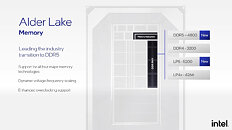
NVIDIA RTX 40 Series Could Reach 800 Watts on Desktop, 175 Watt for Mobile/Laptop
Rumors of NVIDIA's upcoming Ada Lovelace graphics cards keep appearing. With every new update, it seems like the total power consumption is getting bigger, and today we are getting information about different SKUs, including mobile and desktop variants. According to a well-known leaker, kopite7kimi, we have information about the power limits of the upcoming GPUs. The new RTX 40 series GPUs will feature a few initial SKUs: AD102, AD103, AD104, and AD106. Every SKU, except the top AD102, will be available as well. The first in line, AD102, is the most power-hungry SKU with a maximum power limit rating of 800 Watts. This will require multiple power connectors and a very beefy cooling solution to keep it running.
Going down the stack, we have an AD103 SKU limited to 450 Watts on desktop and 175 Watts on mobile. The AD104 chip is limited to 400 Watts on desktop, while the mobile version is still 175 Watts. Additionally, the AD106 SKU is limited to 260 Watts on desktop and 140 Watts on mobile.
Going down the stack, we have an AD103 SKU limited to 450 Watts on desktop and 175 Watts on mobile. The AD104 chip is limited to 400 Watts on desktop, while the mobile version is still 175 Watts. Additionally, the AD106 SKU is limited to 260 Watts on desktop and 140 Watts on mobile.




















